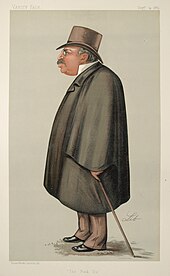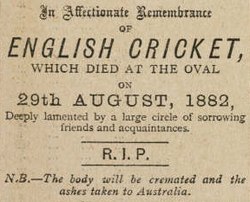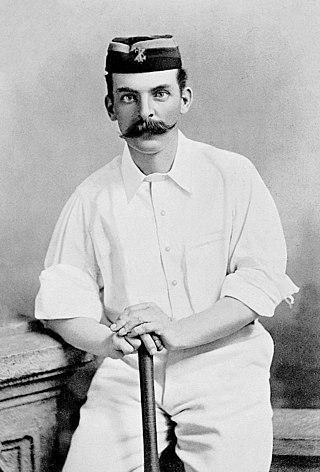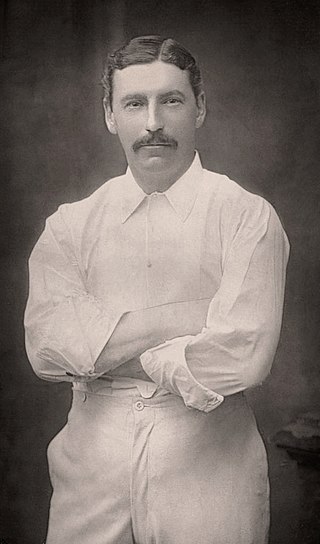
The Sporting Times (founded 1865, ceased publication 1932) was a weekly British newspaper devoted chiefly to sport, and in particular to horse racing. It was informally known as The Pink 'Un, as it was printed on salmon-coloured paper.

The Sporting Times (founded 1865, ceased publication 1932) was a weekly British newspaper devoted chiefly to sport, and in particular to horse racing. It was informally known as The Pink 'Un, as it was printed on salmon-coloured paper.
The paper was founded in 1865 [1] by John Corlett, of Charlton Court, East Sutton, Kent, who was both its editor and its proprietor, and by Dr Joseph Henry Shorthouse. [2] Corlett also wrote a column in the paper called 'Our Note Book' and was associated with it from 1865 to 1913. [3] [4] The Sporting Times was published on a Saturday, and its competitors included The Field , The Sportsman , the Sporting Life , and Bell's Life in London . [5] According to Alexander Andrews's Chapters in the History of British Journalism, the paper thrived "less upon its racing news than upon its profusion of coarse and scurrilous scraps of tittle-tattle, representing 'society journalism' in its most degraded form". [1]
In the 1870s the chess column of The Sporting Times was written by John Wisker (1846–1884), winner of the 1870 British Chess Championship. [6]
On 14 September 1889 the magazine Vanity Fair carried one of its caricatures, printed in colour, of The Sporting Times editor John Corlett, subtitled The Pink 'Un. [7]
In Sir Arthur Conan Doyle's story "The Adventure of the Blue Carbuncle", first published in the Strand Magazine in January 1892, Sherlock Holmes deduces that a man is keen on gambling by noticing that he has a copy of the paper, commenting - "When you see a man with whiskers of that cut and the 'Pink 'un' protruding out of his pocket, you can always draw him by a bet". [8]
In 1922, under the heading "The Scandal of Ulysses", the paper reviewed the complete edition of James Joyce's novel Ulysses just published in Paris, its columnist "Aramis" writing trenchantly: [9]
... appears to have been written by a perverted lunatic who has made a speciality of the literature of the latrine... I have no stomach for Ulysses... James Joyce is a writer of talent, but in Ulysses he has ruled out all the elementary decencies of life and dwells appreciatively on things that sniggering louts of schoolboys guffaw about. In addition to this stupid glorification of mere filth, the book suffers from being written in the manner of a demented George Meredith. There are whole chapters of it without any punctuation or other guide to what the writer is really getting at. Two-thirds of it is incoherent, and the passages that are plainly written are devoid of wit, displaying only a coarse salacrity[ sic ] intended for humour.
In Old Pink 'Un Days (1924) the sporting journalist J. B. Booth wrote about his work with the newspaper and its development, with anecdotes of the turf, the theatre, and boxing, and with frank accounts of some of the colourful characters of the worlds of sport and Fleet Street during the early twentieth century. [10] He followed this up with A Pink 'Un Remembers (1937) [11] and Sporting Times: The Pink 'Un World (1938). [3]
The paper is mentioned in the novel Burmese Days by George Orwell:
Year after year you sit in Kipling-haunted little clubs, whisky to right of you, Pink'un to left of you, listening and eagerly agreeing while Colonel Bodger develops his theory that these bloody nationalists should be boiled in oil.
In P.G. Wodehouse's short story "Bingo and the Little Woman" Bertie Wooster reveals that, "bar a weekly wrestle with the Pink 'Un and an occasional dip into the form-book, I'm not much of a lad for reading".

The paper ceased publication in 1932.
Rudyard Kipling mentions The Sporting Times as The Pink 'Un in his autobiography Something of Myself (1937). [12]

On 29 August 1882, at the Oval, the England cricket team was beaten for the first time in a home Test match by Australia, and on 2 September The Sporting Times newspaper published a famous satirical death notice of English cricket, written by Reginald Shirley Brooks: [13] [14] [15]
In Affectionate RemembranceOF
N.B.—The body will be cremated and the
ENGLISH CRICKET,
WHICH DIED AT THE OVAL
ON
29th AUGUST, 1882,
Deeply lamented by a large circle of sorrowing
friends and acquaintances.
R. I. P.
ashes taken to Australia.
This notice followed a similar one which had appeared two days before in C. W. Alcock's Cricket: a Weekly Record of The Game, reading in full: [16]
SACRED TO THE MEMORY OF ENGLAND'S SUPREMACY IN THE CRICKET-FIELD WHICH EXPIRED ON THE 29TH DAY OF AUGUST, AT THE OVAL: "ITS END WAS PEATE".
However, The Sporting Times was the first to refer to cremation and 'the ashes'.
The England cricket team toured Australia during the winter of 1882, and after it had won two out of three Tests its captain was presented with an urn containing the ashes of a cricket bail. Since then, The Ashes is the notional trophy England and Australia play for in Test match cricket. The urn is kept in the Lord's Cricket Ground museum. [14] Due to its age and fragile condition, the original Ashes urn is not presented to the winning team; instead a Waterford Crystal trophy (first presented in 1999) and replica urns are presented. [17]
The Sporting Times' mock-obituary has been caricatured many times, notably by Australia's Daily Telegraph in describing Australia's series loss to South Africa at the MCG in 2008:
RIP, Australian Cricket, slaughtered by South Africa, 30 December at the MCG, aided and abetted by incompetent selectors, inept batting, impotent bowling, dreadful catching, poor captaincy". [18]

The Men's Ashes is a Test cricket series played biennially between England and Australia. The term originated in a satirical obituary published in a British newspaper, The Sporting Times, immediately after Australia's 1882 victory at The Oval, its first Test win on English soil. The obituary stated that English cricket had died, and that "the body will be cremated and the ashes taken to Australia". The mythical ashes immediately became associated with the 1882–83 series played in Australia, before which the English captain Ivo Bligh had vowed to "regain those ashes". The English media therefore dubbed the tour the quest to regain the Ashes.

The Oval, currently named for sponsorship reasons as the Kia Oval, is an international cricket ground in Kennington, located in the borough of Lambeth, in south London. The Oval has been the home ground of Surrey County Cricket Club since it was opened in 1845. It was the first ground in England to host international Test cricket in September 1880. The final Test match of the English season is traditionally played there.

The England men's cricket team represents England and Wales in international cricket. Since 1997, it has been governed by the England and Wales Cricket Board (ECB), having been previously governed by Marylebone Cricket Club since 1903. England, as a founding nation, is a Full Member of the International Cricket Council (ICC) with Test, One Day International (ODI) and Twenty20 International (T20I) status. Until the 1990s, Scottish and Irish players also played for England as those countries were not yet ICC members in their own right.

Albert Neilson Hornby, nicknamed Monkey Hornby was one of the best-known sportsmen in England during the nineteenth century excelling in both rugby and cricket. He was the first of only two men to captain the country at both rugby and cricket but is also remembered as the England cricket captain whose side lost the Test match which gave rise to the Ashes, at home against the Australians in 1882. Additionally, he played football for Blackburn Rovers.

Ivo Francis Walter Bligh, 8th Earl of Darnley, styled The Honourable Ivo Bligh until 1900, lord of the manor of Cobham, Kent, was a British nobleman, parliamentarian and cricketer.

Allan Gibson Steel was an English amateur cricketer who played for Lancashire County Cricket Club from 1877 to 1893, and in Test cricket for England from 1880 to 1888. He was born in West Derby, Liverpool, and died in Paddington, Middlesex.

Walter William Read was an English cricketer. A fluent right hand bat, he was also an occasional bowler of lobs who sometimes switched to quick overarm deliveries. He captained England in two Test matches, winning them both. Read was named a Wisden Cricketer of the Year in 1893.

The Studd brothers, Sir John Edward Kynaston, George (GB) and Charles (CT), were Victorian gentleman cricketers, educated at Eton and Cambridge. These three brothers represented Eton in the Eton v Harrow annual needle match and represented Cambridge at cricket and dominated the Cambridge cricket scene in the early 1880s.

Charles Thomas Studd, often known as C. T. Studd, was a British missionary, a contributor to The Fundamentals, and a cricketer.

The Cardiff Wales Stadium, which is part of Sophia Gardens Cardiff, is a cricket stadium in Cardiff, Wales. It is located in Sophia Gardens on the River Taff. It is home to Glamorgan County Cricket Club and is listed as an international Test cricket venue.

Richard Gorton Barlow was a cricketer who played for Lancashire and England. Barlow is best remembered for his batting partnership with A N Hornby, which was immortalised in nostalgic poetry by Francis Thompson. He was also an umpire and a football referee, including at the record 26–0 score between Preston North End and Hyde in the FA Cup.

Edward Ferdinando Sutton Tylecote was an English cricketer. He was born in Marston Moretaine, Bedfordshire and was educated at Clifton College and played first-class cricket for Oxford University and Kent County Cricket Club. He also played six Test matches for England. His career lasted from 1869 to 1886.
1882 was the 96th season of cricket in England since the foundation of Marylebone Cricket Club (MCC). England lost to Australia in the match which gave rise to the Ashes.
The following lists events that happened during 1882 in Australia.
The 1882 Australia v England series was at the time considered to be part of another first-class cricket tour of England, by a combined team from the Australian colonies, but the match arranged between the Australians and an England side was later accepted to be a Test match. Although it was not known at the time, the one-off match played at The Oval in south London would become the birth of the Ashes.
Luke Greenwood was an English first-class cricketer, who played 48 matches for Sheffield and Yorkshire from 1861 to 1874.

An English cricket team toured Australia and Ceylon in 1882–83. Captained by Ivo Bligh, the team was on a quest "to recover those Ashes", a reference to the famous RIP notice that was published in the aftermath of England's defeat by Australia at The Oval in the previous English season.
Bernard Whimpress is an Australian historian and author, most active in the area of sports history and especially cricket. He was curator of the museum at Adelaide Oval.

The Ashes urn is a small urn made of terracotta and standing 10.5 cm high, long believed to contain the ashes of a cricket bail or the burnt remains of a lady's veil. It was presented to Ivo Bligh, the captain of the England cricket team, as a personal gift after a friendly match hosted at Rupertswood mansion in Sunbury during the 1882–83 tour in Australia. After his death the urn was presented to the Marylebone Cricket Club, which has it on display at Lord's cricket ground in London. The urn has come to be strongly associated with "The Ashes", the prize for which England and Australia compete in Test series between the two countries.

Reginald Shirley Walkinshaw Brooks was an English journalist whose spoof obituary of English cricket gave rise to the legend of The Ashes.